
It wasn't that long ago we saw download speeds as low as 0.5Mbps, or 512Kbps through cable internet providers. However, because of changes in internet network technology, broadband network speeds have improved by a factor of a solid 100.
With connection speeds from 20Mbps to 100Mbps, Cable is the most common internet choice in Canada, the U.S and other countries. It's important to keep in mind that the data rates of these cable internet connections can sometimes vary due to the network conditions as well as the provider. That said, many people swear by this form of high-speed internet access.
What Role Do Cable Modems Play?
Over time, modems have changes to keep up with the advancements constantly created in the internet world. These devices often use a system known as DOCSIS, or Data Over Cable Service Internet Specification. This allows the modem to meet the speeds offered by a given internet service.
In the past, DOCSIS 2.0 was the system commonly used for modems. Modems that held to these features typically provided maximum speeds of 27Mbps for uploads and 38Mbps for downloads. At the time, DOCSIS 2.0 was made to fit the requirements for internet plans. These plans provided 10 to 15Mbps data rates or lower at the time.
Therefore, at that time you would have wanted a DOCSIS 2.0 router to keep up with your internet needs. However, today that kind of router wouldn't be able to handle common internet speeds at all. Because of that, it's important to consider an upgrade if you're still using a DOCSIS 2.0 router.
These days, DOCSIS 3.0 modems are the ideal because they allow for higher speeds. Many of these modems are capable of speeds greater than 150Mbps. That's quite a huge difference over DOCSIS 2.0 modems! Common internet plans have also increased, allowing you to reach speeds over 38Mbps, and 50Mbps for downloads.
As internet capabilities improve, it's likely that the standards that modems use will improve as well. Over time, we may see further DOCSIS modems created that even make today's modems appear sluggish! Because of that, it's important that you make sure your device is up-to-date to ensure you're able to reach the highest possible speeds.
If you work with a more well-known internet service provider, you may be able to purchase or rent an upgraded modem from them. Therefore, if you need an upgrade then it's a good idea to check with your ISP and see what they have available for you.
Otherwise, you can choose to purchase a new modem elsewhere. Just make sure it's something that is going to work with your provider and package. That way, you won't have to worry about returning the modem later, and you may even be able to save some money over purchasing with the provider.
What Can Slow Down Your Cable Internet?
There are a number of things that can effect the speed of your cable internet. Some of these things, you may not even have thought about! That said, knowing about these variables can help you to adjust your habits or devices in order to obtain the best possible speeds available to you.
In some cases, a slow connection can be due to wireless connections to your router. It's helpful to know that Wi-Fi can be slower than a wired connection. This is largely because these connections can sometimes change to work at slower speeds under specific conditions. In some instances, you may find that the connection can reach under 10Mbps.
The activities of your neighbors can also effect your internet speeds. In many cases, a cable line can connect to several different users in a general location. Therefore, if others in your area are using the internet heavily, you may find that you get slower speeds.
Old, out-of-date devices can also have negative effects on your internet speeds. That's why it's important to update or upgrade your modem, router and even computer and ensure you're able getting the best speeds that are offered at a given time. In addition, extra apps can slow down your connection as well, even if you don't see them. These things can consume internet in the background, resulting in slower speeds for the internet you mean to be using.
In addition, your service provider can sometimes simply be having problems. There can be outages due to weather, equipment defects and more that can result in slower speeds and sometimes no internet access at all. During these situations, make sure to report the problem. If they have already been reported, remain patient and wait. In most cases, the service will return within a few short hours.
Make sure to check on your router regularly, as router problems can have a large effect on your internet speed. Whether it's out of date, defective, overheating or has too many devices connected, there can be issues with the speed. If you can, disconnect devices you are not using in order to allow for faster speeds to those that you need to use at a given time.
Read Also: Broadband Internet Speed Comparison: DSL Vs. Cable
Another issue that can occur is the speed or bandwidth cap places by your internet service provider. When a customer nears or surpasses the amount of bandwidth allotted to them, then speed can be slow to avoid much more bandwidth use. To avoid this, keep an eye on your bandwidth use and keep it under the limit.
Overall, it's wise to keep these potential problems in mind while using the internet, if only to avoid the frustration of not knowing why the internet is slow. You'll also find that through knowing what is causing the internet to be slow, you can often find the solution to the problem. Consequently, enjoying faster speeds will be much easier and you'll be able to enjoy your internet usage without too many problems.
 The 10 Best Cable Modems for Cox of 2020
The 10 Best Cable Modems for Cox of 2020 The 8 Best Wireless Router Brands of 2020
The 8 Best Wireless Router Brands of 2020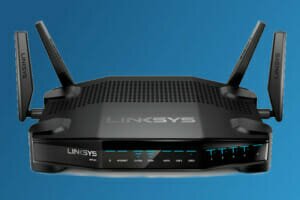 The 7 Best Linksys Routers of 2020
The 7 Best Linksys Routers of 2020 The 8 Best Wi-Fi Extenders of 2020
The 8 Best Wi-Fi Extenders of 2020 The 10 Best Wi-Fi Routers of 2020
The 10 Best Wi-Fi Routers of 2020 The 7 Best DD-WRT Routers of 2020
The 7 Best DD-WRT Routers of 2020 The 7 Best Netgear Routers To Buy In 2020
The 7 Best Netgear Routers To Buy In 2020 The 10 Best Wi-Fi USB Adapters of 2020
The 10 Best Wi-Fi USB Adapters of 2020 The 8 Best Gaming Routers of 2020
The 8 Best Gaming Routers of 2020 The 8 Best 802.11ac WiFi Wireless Routers of 2020
The 8 Best 802.11ac WiFi Wireless Routers of 2020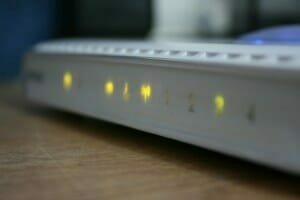 The 10 Best Secure Routers of 2020
The 10 Best Secure Routers of 2020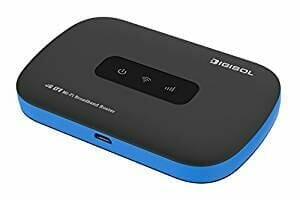 The 7 Best Wireless Travel Routers of 2020
The 7 Best Wireless Travel Routers of 2020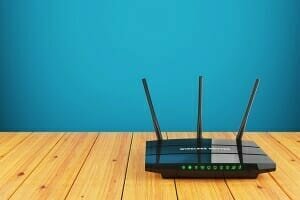 The 7 Best Routers Of 2020 for Under $50
The 7 Best Routers Of 2020 for Under $50 The 7 Best Asus Routers Of 2020
The 7 Best Asus Routers Of 2020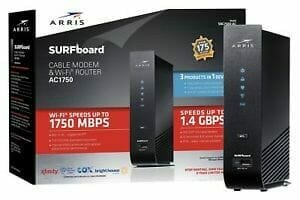 The 7 Best Cable Router/Modem Combos of 2020
The 7 Best Cable Router/Modem Combos of 2020